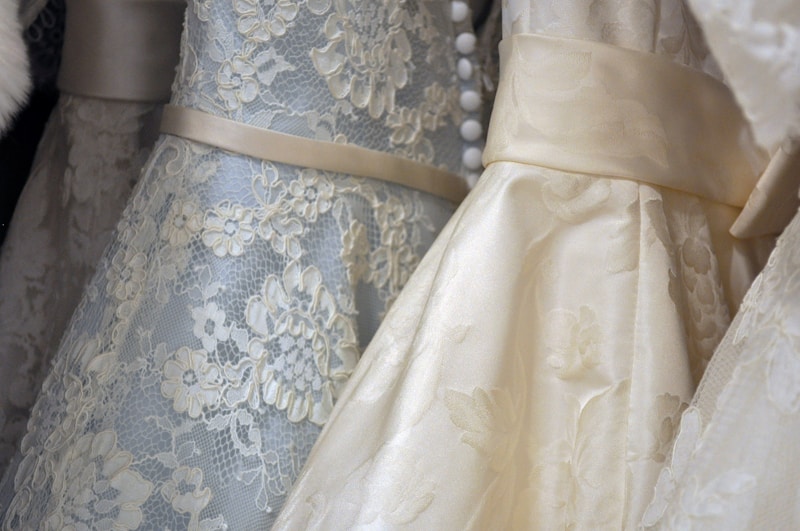Exploring Textile Diversity in Modern Wedding Dress Trends
Exploring Textile Diversity in Modern Wedding Dress Trends
Weddings are one of the most significant events in our lives, and the wedding dress is often at the heart of this celebration. Over the years, the trends in wedding dresses have evolved tremendously, reflecting changes in culture, technology, and, importantly, textile diversity. In this article, we will explore how various fabrics shape modern wedding dress trends, the importance of textile choice, and tips for brides-to-be to consider in selecting the perfect gown.
The Shift Towards Sustainable Fabrics
In today's eco-conscious world, many couples are considering sustainable wedding options, influencing textile choices in modern wedding dresses. Fabrics such as organic cotton, hemp, and bamboo are gaining popularity due to their environmentally friendly attributes. Couples are not only looking for beauty in their dresses but also a positive impact on the environment. Sustainable textiles offer alternatives that are durable, biodegradable, and often less harmful to the planet compared to traditional materials like silk or polyester.
Popular Sustainable Fabrics
| Fabric Type | Benefits | Characteristics |
| Organic Cotton | Biodegradable, Soft | Lightweight, Breathable |
| Hemp | Durable, Naturally Grown | Strong, Textured |
| Bamboo | Antimicrobial, Eco-friendly | Soft, Lustrous |
Textile Innovations in Wedding Dress Design
Modern wedding dress trends are also influenced by innovations in textile technology. New fabric blends and treatments allow for more creative designs, such as 3D lace, textured silks, and even metallic threads. These innovations provide designers with the tools to create stunning gowns that not only look beautiful but also offer comfort and wearability.

3D Lace and Embroidery
3D lace has become a prominent feature in contemporary bridal wear. This innovative textile adds depth and dimension to wedding dresses, creating stunning visual effects. Similarly, detailed embroidery has evolved to include intricate designs that can be customized to reflect the couple's personalities and heritage.
The Role of Cultural Influences
Another significant factor in modern wedding dress trends is the influence of different cultures. As our world becomes more interconnected, brides are drawing inspiration from various cultural traditions, resulting in a rich tapestry of textile choices. From Indian bridal lehengas adorned with rich brocade to western-style gowns with delicate chiffon overlays, the possibilities are endless.
Integrating Cultural Textiles
Brides are increasingly opting to incorporate textiles that reflect their cultural backgrounds into their wedding dresses. This can include using traditional fabrics, such as:
- Silk from Southeast Asia.
- Brocatelle from Italy.
- Kimono silk from Japan.
- Kente cloth from West Africa.
This fusion not only celebrates diversity but also allows brides to showcase their heritage in a modern context.
The Impact of Texture on Design
Texture plays a vital role in the design of wedding dresses. Modern brides are exploring various textures that provide unique visual and tactile experiences. From silky satin to airy chiffon and structured tulle, each fabric lends its character to the gown, affecting how the dress drapes and moves.
Textured fabrics are often layered to create a multidimensional effect. For example, combining a silky base with a textured lace overlay can create a stunning contrast. Additionally, textured elements can enhance movement, making the dress flow beautifully as the bride walks down the aisle.
Hybrid Fabrics
The trend towards hybrid fabrics—those that combine different textile materials—has also emerged. For instance, a dress can feature a bodice made from structured satin mixed with a flowing chiffon skirt. This type of design not only brings together the best characteristics of each fabric but also allows for more extensive creative expression.
Considerations for Modern Brides
While the selection of fabrics can significantly impact a wedding dress's aesthetic, brides should also consider comfort, functionality, and maintenance. Here are a few essential tips for brides to ensure they choose the right textiles for their gowns:
- Understand Your Venue: Different venues may have various climates; a lightweight fabric like chiffon may be more suitable for a summer beach wedding, while heavier materials provide warmth for a winter ceremony.
- Prioritize Comfort: Try on different textiles and pay attention to how they feel. Comfort is key, especially during long ceremony and reception hours.
- Think About Movement: Select fabrics that allow for ease of movement if you plan to dance and enjoy your celebration.
- Check for Maintenance: Be aware of the care required for each fabric type. Some materials may require special cleaning, while others can be easily maintained.
Conclusion
The world of wedding dress trends is a beautifully diverse landscape shaped by various textiles. From sustainable fabrics to cultural influences and innovative designs, modern brides have an array of choices to reflect their unique styles. Understanding textile diversity and its impact on wedding dress trends can empower brides to make informed decisions, ensuring they feel comfortable and beautiful on their special day.
As you embark on this exciting journey, remember to explore different fabrics, embrace cultural elements, and prioritize comfort and maintenance in your gown choice. With careful consideration, you can find the perfect dress that celebrates not just your love story, but also the rich diversity that surrounds it.
